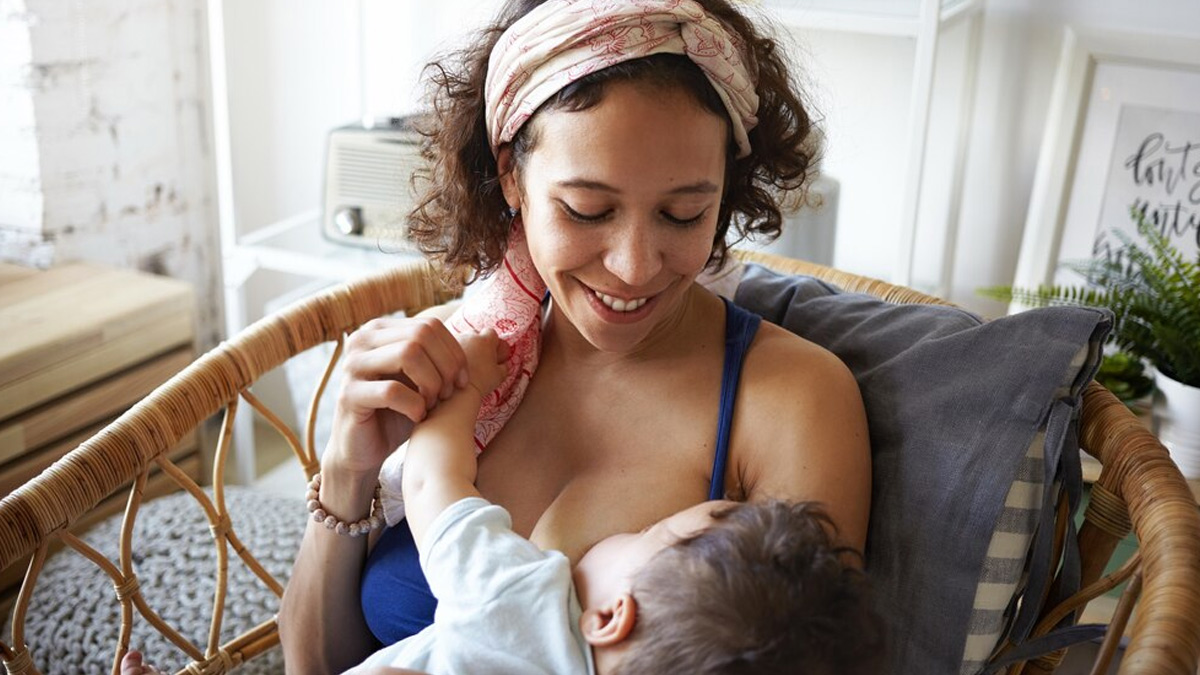
Breast care doesn’t end after childbirth—it becomes even more crucial during the postpartum stage, especially for breastfeeding mothers. During this time, women may face several challenges such as engorgement, sore nipples, blocked milk ducts, and breastfeeding-related pain.
Table of Content:-
Postpartum breast care goes beyond maintaining hygiene; it also involves paying close attention to any changes in the breasts, including pain or soreness, whether related to breastfeeding or not. So, as a new mother, here's all you should know about taking care of your breasts during this crucial stage.
What Happens When You Do Not Maintain Postpartum Breast Health

Post childbirth, women's breasts have a major role to play in their child's growth and development. The World Health Organization (WHO) and UNICEF recommend that babies initiate breastfeeding within the first hour of birth and be exclusively breastfed for the first six months of life. Breast milk is the primary source of nutrition for most babies and helps protect them from many illnesses and diseases.
Additionally, breastfeeding also lowers the risk of breast cancer in women. In fact, a 2015 meta-analysis published in the Annals of Oncology found that breastfeeding was associated with a 20% reduction in the risk of triple-negative breast cancer.
While breastfeeding is important, women should not overlook their breast health during this time. Not maintaining proper postpartum breast health can lead to various issues, such as:
Mastitis: A breast infection that can occur when a blocked duct isn't treated. Symptoms include breast pain, tenderness, redness, fever, and flu-like symptoms.
Breast and nipple thrush: A fungal infection that can cause severe nipple pain, burning, and a rash on the breast.
Plugged milk duct: A red, sore lump that may feel hot to the touch.
Nipple retraction: The nipple turns inward.
Unusual nipple discharge or bleeding nipple: An issue that may occur after giving birth.
Tips To Care For Your Breasts Postpartum

According to Dr Archana Dhawan Bajaj, Gynaecologist, Obstetrician, and IVF Expert, Nurture IVF Clinic, New Delhi, postpartum breast health care is extremely crucial. To maintain healthy breasts, here are some tips to follow:
- Establish a regular habit for monitoring your breasts and nipples. Learning how to recognise, prevent, and treat illnesses that may arise during nursing will help you avoid difficulties and cure discomfort more quickly.
- Wear a supportive bra at night. Make sure it fits properly and isn't too tight. Nursing bras are ideal for feeding.
- Avoid wearing constricting garments or underwire bras, which can obstruct milk ducts and increase the risk of breast infection.
- Replace nursing pads when they get moist, wet, or dirty.
- Take a daily shower. Apply only clean water to the nipples.
- Avoid using soap, as it removes the natural lubrication generated by the glands surrounding your nipples, which can cause them to become dry and cracked.
Also Read: Exercising For 80 Minutes Per Week May Reduce Postpartum Depression Symptoms, Study Reveals
How To Tend To Sore Breasts After Breastfeeding
Many factors and underlying conditions can cause breast soreness after childbirth. One of the most common causes is breast engorgement, which occurs when your body adjusts to producing milk and breasts become full and uncomfortable. Your breasts can become hard, tight, and painful, and symptoms may worsen if you skip feeding or pumping.
Engorgement is usually temporary and peaks around five days after giving birth. If you nurse or pump every 2–3 hours, your breasts should not feel engorged.
Another common reason is mastitis, a kind of breast inflammation that can cause infection. People who breastfeed are more prone to getting mastitis. You may have red, puffy, and aching breasts, as well as flu-like symptoms. Dr Bajaj says, “A decent rule of thumb is to only pump enough for your infant. If you feed from your breast, do not pump to "drain" it.”
To relieve breast soreness or to prevent it, here are a few remedies you can try:
- Try several nursing positions, such as the cradle hold, cross-cradle hold, football (clutch) hold, and lying down (to modify the location of the baby's mouth on your breast and lessen soreness).
- Begin nursing on the least painful side until the letdown arrives, then gently transition the baby to the other breast, paying close attention to proper placement and latch-on.
- When your nipples are painful, put some of your own milk on them. Your milk offers restorative qualities that help ease discomfort.
How to manage engorgements:
- Continue to pump or feed according to your infant's needs.
- Follow your healthcare provider's medication guidelines.
- Use cold packs on breasts after nursing to minimise irritation.
- Experience manual lymphatic drainage. help enhance lymph flow in the breasts. Swelling in your breasts may decrease as lymph flow improves.
- Test reverse pressure softening. This takes fluid away from the nipple, allowing your infant to latch more readily.
- Try nursing in a side-lying posture.
- Do not rub your breasts unless your physician instructs you to. Using excessive force or forcefully rubbing your breasts might exacerbate your sensations.
- Wearing a supportive bra can promote fluid movement in the breasts.
Is It Safe To Apply Lotions Or Creams On Breasts While Breastfeeding?

“Breasts and nipples require no particular care when nursing,” says Dr Bajaj, highlighting that the little bumps on your areola create a unique oil that naturally cleans, lubricates, and protects the nipples. Simply cleanse your breasts and nipples with normal, warm water when showering or bathing.
Avoid using soaps, astringents, or alcohol since they are drying and cause nipple pain. Multi-ingredient nipple creams or lotions should also be avoided since they are unsafe for the baby to eat and can trigger allergic reactions on your nipples.
Note Any Breast Changes After Childbirth
In addition to relieving breast pain and soreness, it is also crucial to address any unusual changes in the breasts. Dr Bajaj says, “Anyone who is concerned about breast changes that occur during pregnancy, during, or after lactation should consult their doctor. Seek immediate medical assistance if any symptoms of mastitis occur, especially if they are severe or do not resolve within 24 hours.”
Most importantly, breast lumps, as well as atypical skin or nipple changes, should be investigated by a doctor since they might indicate malignancy,” she concludes.
Also watch this video
How we keep this article up to date:
We work with experts and keep a close eye on the latest in health and wellness. Whenever there is a new research or helpful information, we update our articles with accurate and useful advice.
Current Version
